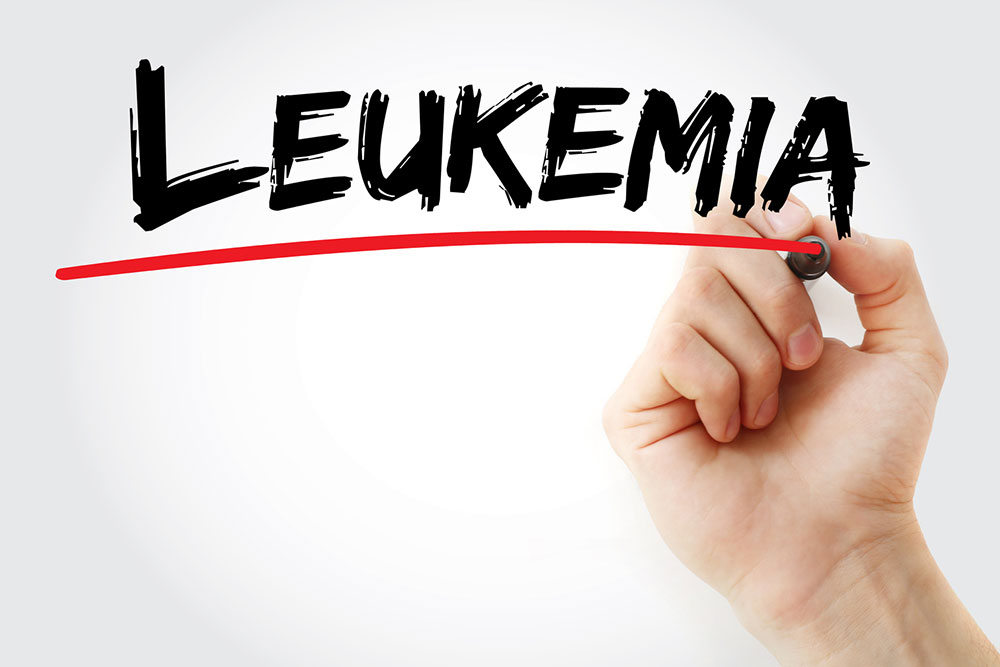
Risk factors and symptoms of leukemia
Leukemia, commonly known as blood cancer, can be acute or chronic and can affect different types of white blood cells in the blood. Acute leukemia occurs suddenly, and children are most likely to be affected. Chronic leukemia mainly affects adults, although children can be affected too.
There are some factors that may lead to an increased risk of leukemia:
- Heredity: If members of a person’s family have been diagnosed with leukemia, they face a higher risk of developing leukemia too.
- Genetics: Disorders that originate from abnormal genes, like Down’s syndrome increase the risk of leukemia.
- Cancer treatment: If a person has been treated for some other form of cancer with chemotherapy or radiation therapy, the likelihood of developing leukemia increases.
- Exposure to some chemicals: People who work with gasoline and in some chemical industries are prone to leukemia due to exposure to certain substances in petrochemicals and hair dyes.
- Smoking: The use of tobacco leads to several problems, and it is the trigger for many severe diseases. Smokers face a risk of developing acute myelogenous leukemia (AML).
There are a few factors that are not within a person’s control that could lead to leukemia.
Leukemia occurs due to mutations in the DNA. In some cases, the tumor suppressor genes are deactivated. In others, oncogenes (genes that have the traits to create tumor and cancer cells) are activated. The mutations lead to the disruption of cell lifecycles, whereby the production of abnormal cells increases and the destruction of aged cells decreases, causing an imbalance in the number of cells in the body. The symptoms are a result of this imbalance and the activities of the abnormal cells.
Though different types of leukemia cause different symptoms, some of the common symptoms are caused due to the growth of different types of white blood cells (lymphocytes and myeloid cells):
- Pale skin: This is caused by anemia (low red blood cell count)
- Ecchymosis: Easy bruising, discoloration, and bleeding, caused by the breaking of the capillaries (tiny blood vessels) within the skin tissue. The tiny bruises are also called petechiae. Nosebleeds are another sign of leukemia.
- Night sweats: Excessive perspiration at night.
- Weakness and fatigue: A feeling of tiredness and a lack of energy, leading to a loss of motivation and drowsiness that does not subside even after rest.
- Shortness of breath: Experiencing difficulty in breathing even while performing simple activities.
- Weight loss: Loss of weight that is not intentional.
- Chills and fever : Feeling cold without reason; a person may shiver, and this symptom can be accompanied by fever.
- Bone pain: A feeling of an ache or tenderness in the bones, especially in the legs.
- Swollen lymph nodes: Painless swelling of the lymph nodes, especially in the neck and armpits.
- Enlarged liver and spleen: Hepatomegaly (enlarged liver) affects the liver’s ability to function normally. Splenomegaly (enlarged spleen) disrupts the spleen’s ability to recycle iron, filter out and remove dead red blood cells, and store a reserve of blood to address a sudden loss of blood flow to the tissues. Both these signs may be accompanied by abdominal swelling and pain.
If leukemia affects the central nervous system (CNS), neurological symptoms like nausea, vomiting, headaches, migraines, seizures, and coma can occur due to the pressure on the brain stem and spine.


